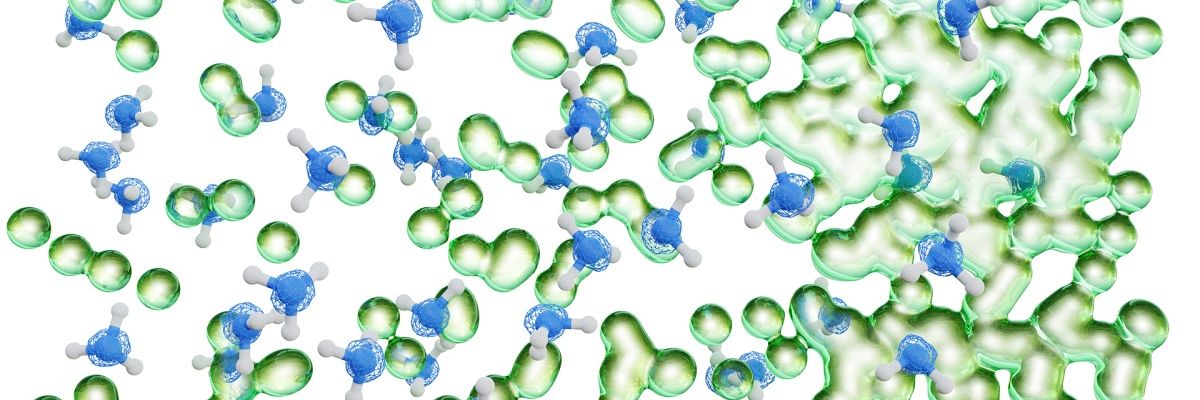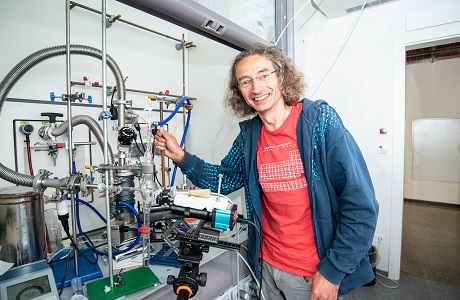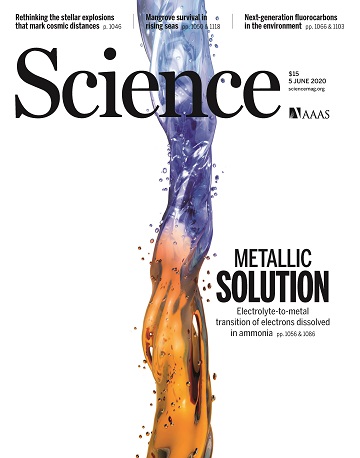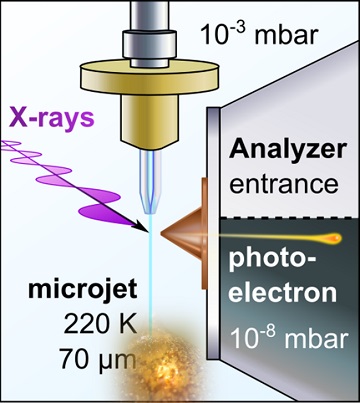
How is a metal formed?
05. 06. 2020
What does it mean to be a metal and how is a metal formed? These seem like textbook questions with a simple answer: Metal is characterized by free electrons which give rise to its high electric conductivity. But how exactly is a metallic conduction band formed from originally localized electrons and what is the corresponding microscopic picture for the material involved? In collaboration involving scientists from the Czech Republic, USA, and Germany, the research team of Pavel Jungwirth from the Institute of Organic Chemistry and Biochemistry of the Czech Academy of Sciences (IOCB Prague) has succeeded in mapping at the molecular level the electrolyte-to-metal transition in alkali metal – liquid ammonia solutions using a combination of photoelectron spectroscopy (PES) and electronic structure calculations. The results of their research were recently published as a Research Article in Science, one of the most prestigious scientific journals in the world, which also selected the study for cover image.
Alkali metals dissolved in liquid ammonia represent archetypal systems to explore the transition from blue electrolytes at low concentrations to bronze or gold colored metallic solutions (with conductivity comparable to a copper wire) with higher concentrations of excess electrons. At the same time, PES represents an ideal tool for establishing the electronic structure pertinent to this transition. As an ultra-high vacuum technique, PES was long thought to be incompatible with volatile liquids until the technique of liquid microjets was developed for water and aqueous solutions. However, it was only in 2019 that the group of Pavel Jungwirth in collaboration with colleagues at the University of Southern California and at the BESSY II synchrotron in Berlin performed first successful PES measurements on a refrigerated polar liquid – pure liquid ammonia.

Pavel Jungwirth, Institute of Organic Chemistry and Biochemistry, CAS
“This is what happens when you give a theory group a bit of lab space to play,” says Pavel Jungwirth of the decision of the Institute’s director to grant him a small laboratory.
This achievement opened the door to PES studies of alkali metal – liquid ammonia systems (as re-ported in the present paper in Science), which map the electrolyte-to-metal transition for lithium, sodium, and potassium dissolved in liquid ammonia by means of PES using soft X-ray synchrotron radiation. In this way, researchers captured for the first time the photoelectron signal of excess elec-trons in liquid ammonia as a peak at around 2 eV binding energy. This peak then broadens asymmet-rically toward higher binding energies upon increasing the alkali metal concentration, gradually form-ing a conduction band with a sharp Fermi edge accompanied by plasmon peaks, both of which being fingerprints of the nascent metallic behavior.

Cover image of Science
Together with state-of-the-art electronic structure calculations, these measurements provide a de-tailed molecular picture of the transition from a non-metal to a metal, allowing us to better understand the onset of metallic behavior characterized by properties such as the very large electric conductivi-ty.
“Hopefully the present work on metallic ammonia will open the path to realizing our most ‘explosive’ idea: The preparation of metallic water by very carefully mixing it with alkali metals,” concludes Pavel Jungwirth.

Schematic picture of a liquid ammonia microjet with dissolved alkali metals
Prepared by: Institute of Organic Chemistry and Biochemistry of the Czech Academy of Sciences (IOCB Prague)
Photo: Tomáš Belloň, Institute of Organic Chemistry and Biochemistry of the Czech Academy of Sciences (IOCB Prague); Science
Read also
- Public Hearing: “Making Sense of Open Science”
- SUNER-C concludes after three years dedicated to the renewable energy future
- A trapped state: The pandemic impact on public attitudes, trust, and behavior
- Aerial archaeology: Tracing the footsteps of our ancestors from the sky
- Archaeologists uncover ancient finds along Prague Ring Road
- Our microbiome largely depends on what we eat, says microbiologist Michal Kraus
- The ABCs of writing: Why did its invention mark a turning point for humankind?
- We learn, remember, forget… What can memory actually do? And can we outsmart it?
- New Center for Electron Microscopy in Brno opens its doors to global science
- The hidden lives of waste: What can we learn from waste workers and pickers?
The Czech Academy of Sciences (the CAS)
The mission of the CAS
The primary mission of the CAS is to conduct research in a broad spectrum of natural, technical and social sciences as well as humanities. This research aims to advance progress of scientific knowledge at the international level, considering, however, the specific needs of the Czech society and the national culture.
President of the CAS
Prof. Eva Zažímalová has started her second term of office in May 2021. She is a respected scientist, and a Professor of Plant Anatomy and Physiology.
She is also a part of GCSA of the EU.